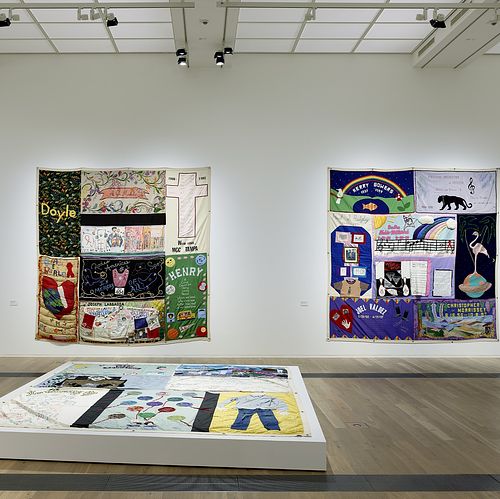AUDIO
National AIDS Memorial Quilt
What may appear colourful and cheerful at first glance reveals an oppressive but also deeply moving story at closer look: in front of us are three blocks of the National AIDS Memorial Quilt, one of the largest collaborative art projects in the world, which is still continued to this day. The project of creating a quilt composed of numerous individual memorial cloths began in 1985 in San Francisco. Its aim was to honour the names of those who died of AIDS, thereby fighting against their anonymity. The quilt consists of individual squares, called blocks. Each block is assembled from eight rectangular memorial cloths, crafted from various fabrics and adorned with a wide range of materials that are embroidered, stitched or written upon. Many of these cloths were crafted by private individuals to commemorate a family member, while others were created by groups of friends, clubs, colleagues or even fans, such as the cloths dedicated to British rock star Freddie Mercury, which we can see on two of the blocks on display here. Often, these memorial cloths feature personal messages, farewells and memories. The process of sewing, stitching and decorating these cloths within a community helps those in mourning to come together and share their thoughts and memories. To date, over 50,000 memorial cloths have been created.
The blocks draw from the traditional craft of quilting, where various pieces of fabric are sewn together in lockstitches to create a large blanket, or quilt. The National AIDS Memorial Quilt serves as a powerful reminder of those who died as a result of AIDS, making their names visible. This can also be seen as a political act, as the U.S. government in the 1980s sought to anonymise the victims of AIDS by reducing them to numbers. The National AIDS Memorial Quilt broke this taboo and actively fights against stigmatisation and othering. It champions the call for equality and is a powerful and impressive symbol of solidarity, humanity and hope.
